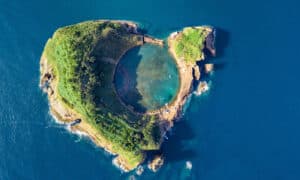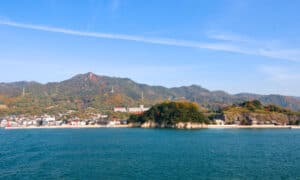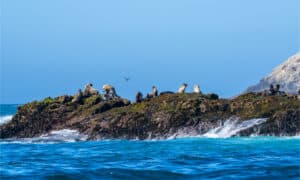Discover the 15 Largest Uninhabited Islands in the World
@media (min-width: 481px) {
.mobile-top-content {
display: none;
}
}
#mobileTopContentCTACarouselControls { overflow: hidden; text-overflow: ellipsis; white-space: nowrap; }
.mobile-top-content .more { color: #fff; }
.mobile-top-content a { color: #fff; text-decoration: underline; }
.mobile-top-content a:hover { color: #fff; text-decoration: underline; }
@media (max-width: 480px) {
.mobile-top-content {
background-color: #06a10b;
color: #fff;
text-align: center;
/*height: 60px;
padding-top:5px;*/
font-size:80%;
/* display: block; */
margin: 0px -30px;
}
}
It might sound weird, but only 10% of the Earth’s surface is inhabited or covered by humans. Then, almost 71% of our planet’s surface consists of water. This means that 20% of its land surface is uninhabited, which likely includes some of the largest uninhabited islands in the world.
Now, that 10% doesn’t sound that weird anymore, right?
We know much about the inhabited parts of the world – cities, countries, etc. The same cannot be said about the uninhabited 20%. Most uninhabited areas are dense jungles, forests, or hard-to-reach areas. However, some islands fall into this category too.
Unlike the jungles or forests, islands have little to no density in terms of both flora and fauna. Most of them consist of ice caps, snow, and below-freezing temperatures, to name a few. If you want to find out more about them, we introduce you to the 15 largest uninhabited islands in the world!
1. Devon Island
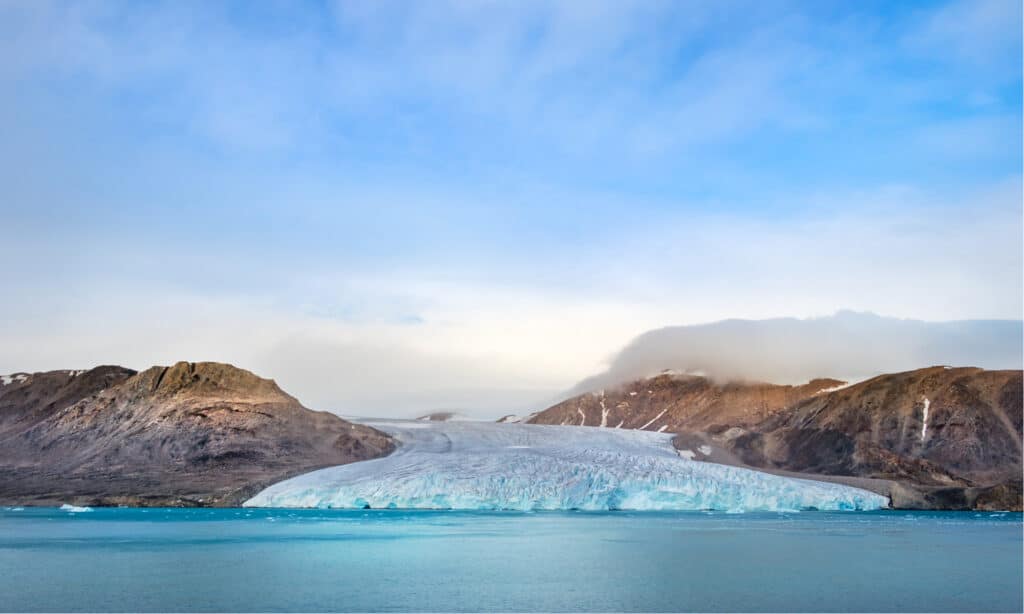
RUBEN M RAMOS/Shutterstock.com
| Devon Island | ||
|---|---|---|
| Size (sq mi) | Location | Fauna |
| 21,331 | Canada | Muskox, small birds, and mammals |
Devon Island is the largest uninhabited island in the world, measuring 21,331 square miles. As a comparison, it is a bit smaller than Croatia. Devon Island is situated in Baffin Bay, Nunavut, Canada. It’s the sixth-largest island in Canada and the 27th in the world.
Scientists have shown curiosity about this island as its surface resembles the one on Mars. Another feature the island is known for is the Haughton impact crater, which appeared around 39 million years ago.
The island hosts muskoxen, small birds and mammals, and hypolith communities.
2. Alexander Island

Peter Gudella/Shutterstock.com
| Alexander Island | |
|---|---|
| Size (sq mi) | Location |
| 18,950 | Antarctica |
Alexander Island is located in Antarctica, in the Bellingshausen Sea. It was discovered in 1921 by a Russian expedition and was named after the reigning Tsar Alexander I of Russia.
It consists of mountain ranges and hills. Hodgson Lake, the Saturn Glacier, Damocles Point, and Mount Tyrrell are some of the features that make Alexander Island a curious landmass.
3. Severny Island
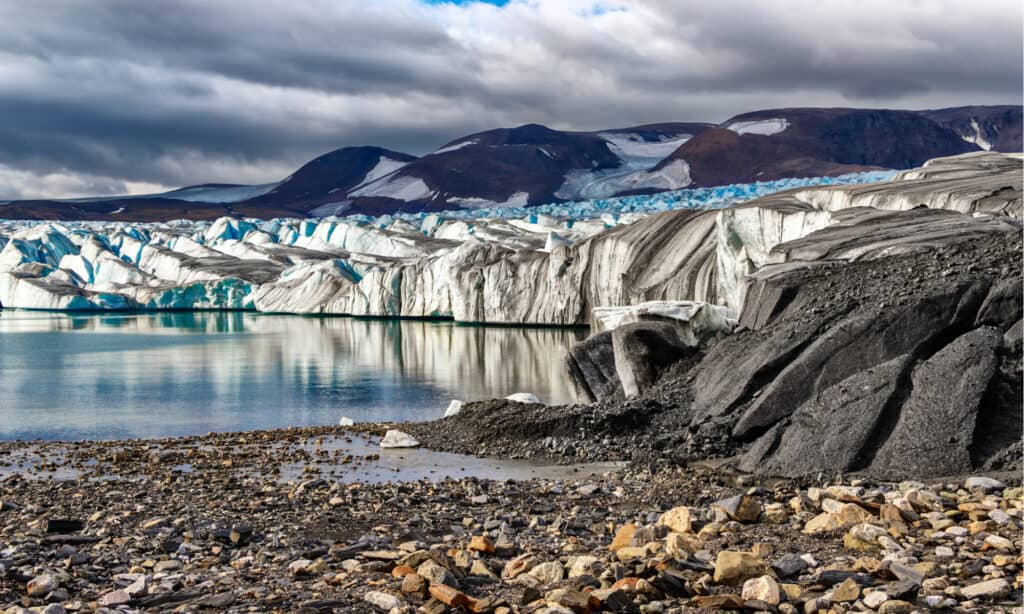
gans33/Shutterstock.com
| Severny Island | |
|---|---|
| Size (sq mi) | Location |
| 18,882 | Russia |
Severny Island is the 30th largest and the 3rd-largest uninhabited island in the world. It is located in the Novaya Zemlya archipelago and is a part of the Russian Arctic National Park. Almost half of the island is covered by the Severny Island ice cap – the largest glacier in Europe.
Between 1958 and 1961, the cape of Sukhoy Nos was used for nuclear weapons testing. In 1961, the Tsar Bomba hydrogen bomb test destroyed every building on the island.
4. Berkner Island
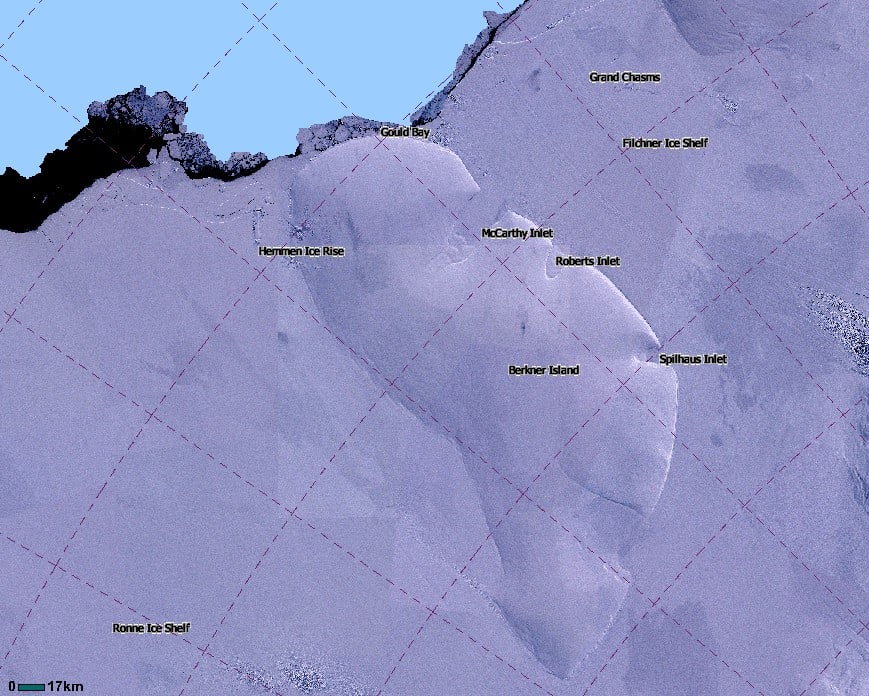
| Berkner Island | ||
|---|---|---|
| Size (sq mi) | Location | Fauna |
| 17,000 | Antarctica | Emperor penguin |
Berkner Island is located in Antarctica and is completely covered in ice. It was discovered during an expedition in 1957-1958. Over the years, it served as a jumping-off point for various polar expeditions.
Berkner Island features a designated Important Bird Area. There, one can find a colony of around 8,000 emperor penguins.
5. Axel Heiberg Island

Jeff Amantea/Shutterstock.com
| Axel Heiberg Island | ||
|---|---|---|
| Size (sq mi) | Location | Fauna |
| 16,671 | Canada | Aurorachelys turtle, Tingmiatornis bird |
Axel Heiberg Island is located in Nunavut, Canada. It’s the 7th-largest in Canada and the 32nd-largest in the world. It is named after Axel Heiberg, a Norwegian diplomat, financier, and expedition sponsor that explored the island. Even though it’s now uninhabited, it was inhabited in the past by the Unit.
There’s a small research station called the McGill Arctic Research Station on the island. It’s operated by McGill University and conducts research on climate change, hydrology, geology, microbiology, and other fields of study.
6. Melville Island

NASA blue pearl data, collecter using NASA World Wind / public domain
| Melville Island | ||
|---|---|---|
| Size (sq mi) | Location | Fauna |
| 16,274 | Canada | Polar bear, muskox, arctic wolf, brant goose |
Melville Island is located in the Arctic Archipelago. It is the 33rd largest island in the world and the 8th-largest in Canada.
While there’s almost no vegetation on the island, it hosts various animals, such as Arctic wolves, Arctic foxes, polar bears, and ermines. Between 4,000 and 8,000 brants (brant gooses) inhabit the island. It can easily be said that it’s one of the rarest goose stocks on the planet.
7. Prince of Wales Island
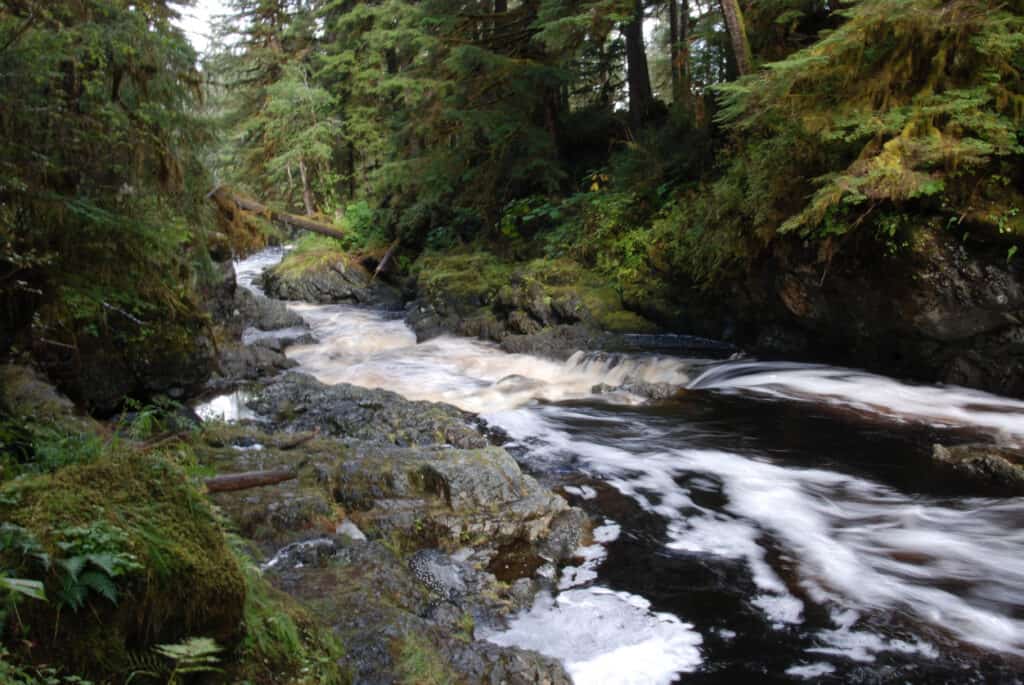
iStock.com/Steve Howard
| Prince of Wales Island | ||
|---|---|---|
| Size (sq mi) | Location | Animals |
| 12,872 | Canada | Caribou, wolf |
Prince of Wales Island is one of the largest islands in the Canadian Arctic Archipelago. The island was discovered in 1851. It was named after the eldest son of Queen Victoria, Albert Edward, who eventually became King Edward VII.
A study shows that in 1980, the Prince of Wales, Somerset, and Russell Islands, located in the Canadian Arctic Archipelago, hosted 6048 caribou. The number significantly decreased until 1995, reaching around 100 caribou. This decrease is associated with the increased number of wolves on the island. There’s no official evidence of what animals inhabit the island today.
8. Somerset Island
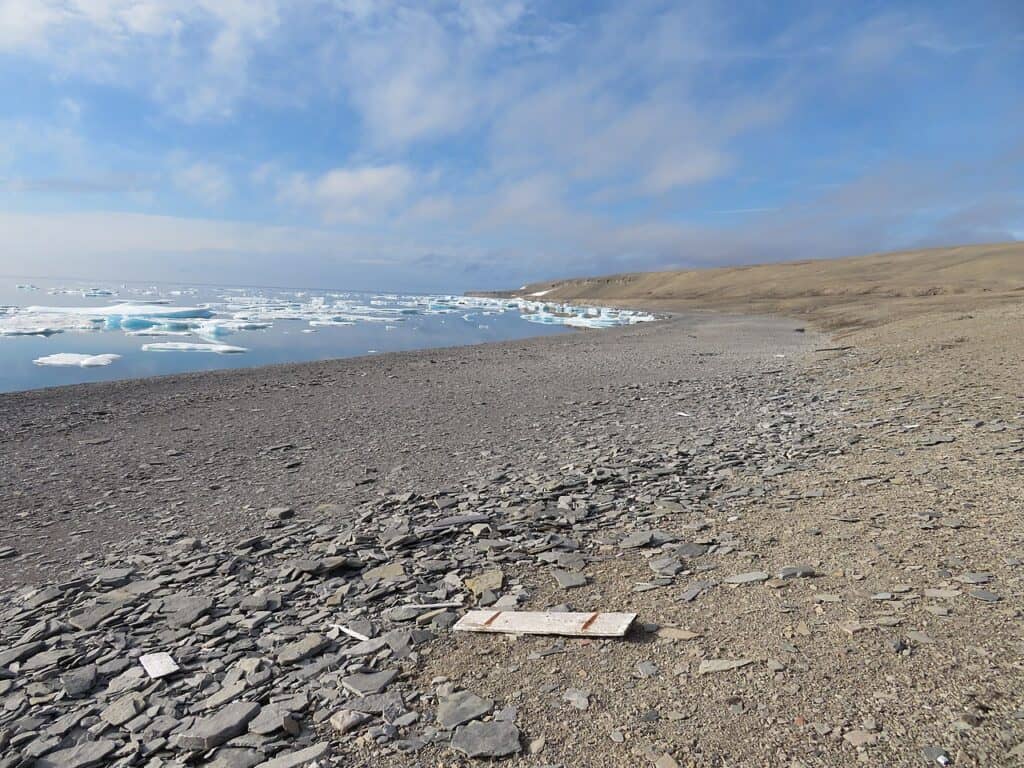
LawrieM – License
| Somerset Island | ||
|---|---|---|
| Size (sq mi) | Location | Fauna |
| 9,570 | Canada | Beluga whale |
Somerset Island is located near Prince of Wales Island, in the Canadian Arctic Archipelago. Evidence shows that it was inhabited by the Thule people around 1000 AD.
The island hosts an Arctic Watch Lodge tourist establishment because of the beluga whales spotted during summer. Tourists can get to the island via a chartered flight of around five hours.
9. Kotelny Island
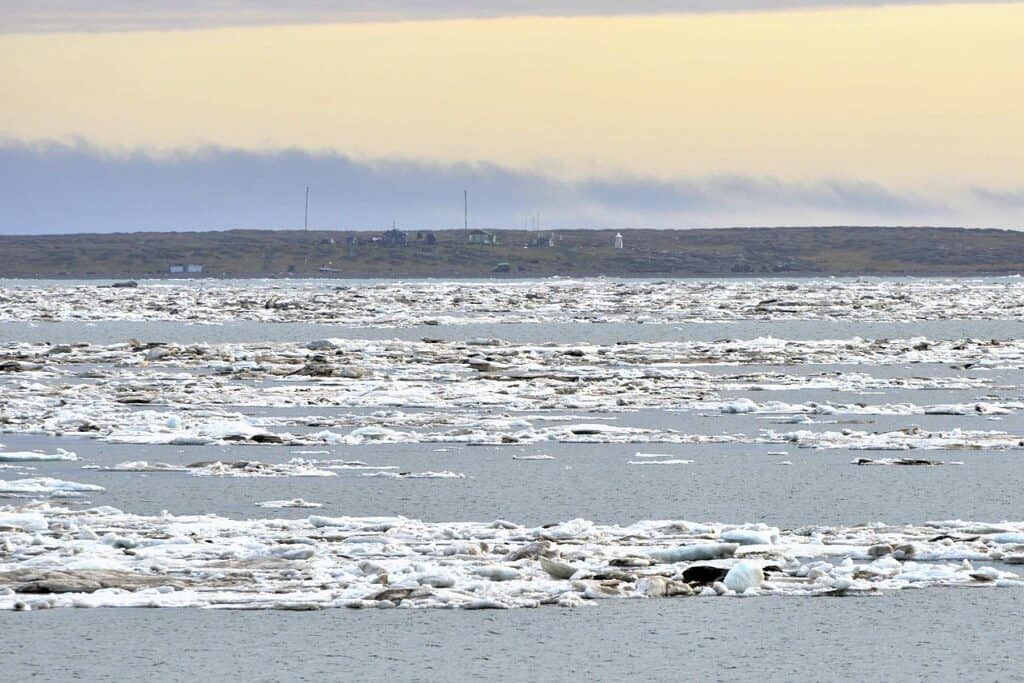
Ansgar Walk / Creative Commons – License
| Kotelny Island | ||
|---|---|---|
| Size (sq mi) | Location | Fauna |
| 9,300 | Russia | Reindeer, polar fox |
Kotelny Island is located in the Russian Arctic, between the Laptev Sea and the East Siberian Sea. It was discovered in 1773 by Ivan Lyakhov, who decided to follow them after noticing reindeer tracks across the sea ice.
The island consists of sediments and sedimentary rocks dating as far back as the Early Paleozoic and Late Cenozoic.
Just in case you’re a Jules Verne fan, the action in “Cesar Cascabel” takes place on this island.
10. Bathurst Island
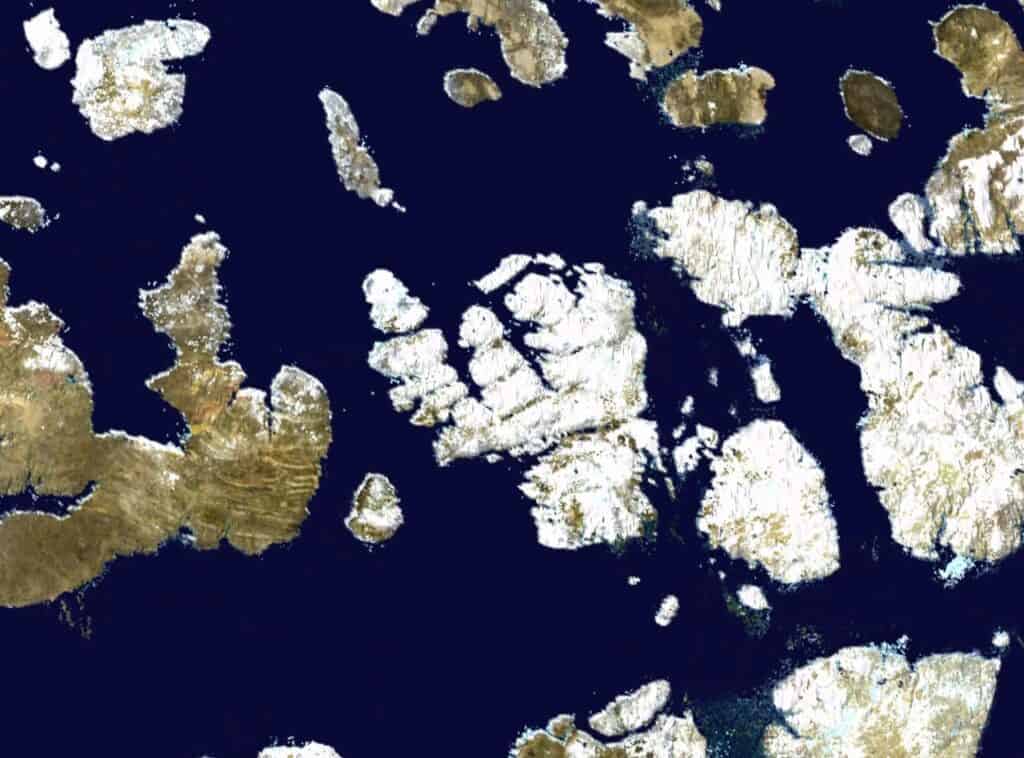
| Bathurst Island | ||
|---|---|---|
| Size (sq mi) | Location | Fauna |
| 6,194 | Canada | Various species of birds and insects, muskox, caribou |
Bathurst Island is located in the Canadian Arctic Archipelago and features a rich wildlife population. Although it’s now uninhabited, it previously hosted various native peoples, such as Independence I and II culture native peoples and Pre-Dorset and Dorset cultures.
Bathurst Island features the Polar Bear Pass, a wetland and mountain pass that is home to various bird and insect species. Ecological research stations currently conducting studies on caribou and muskoxen are present on the island.
11. Prince Patrick Island

iStock.com/Duyi_Han
| Prince Patrick Island | |
|---|---|
| Size (sq mi) | Location |
| 6,119 | Canada |
Prince Patrick Island is located northwest of Melville Island. It is one of the least accessible territories in Canada. It was discovered in 1953 by George Mecham and Francis Leopold McClintock. Later on, it was named after the Governor-General of Canada from 1911 to 1926, Prince Arthur William Patrick, Duke of Connaught.
In 1948, a High Arctic Weather Station started operating on the island to conduct regular weather observations. 10 to 40 people worked and lived there. It was closed in 1997, and its staff represented the only people who ever lived on Prince Patrick Island.
12. Thurston Island

NASA Goddard Space Flight Center / Jim Yungel / flickr – License
| Thurston Island | |
|---|---|
| Size (sq mi) | Location |
| 6,100 | Antarctica |
After Alexander Island and Berkner Island, Thurston Island is the third-largest island in Antarctica. It was discovered from the air in 1940, but it was recognized as an island only in 1960. Until then, people believed it was a peninsula. Thurston Island was named after a sponsor of the Antarctic Expedition, W. Harris Thurston.
The island features the Walker Mountains and numerous glaciers and peninsulas.
13. Nordaustlandet
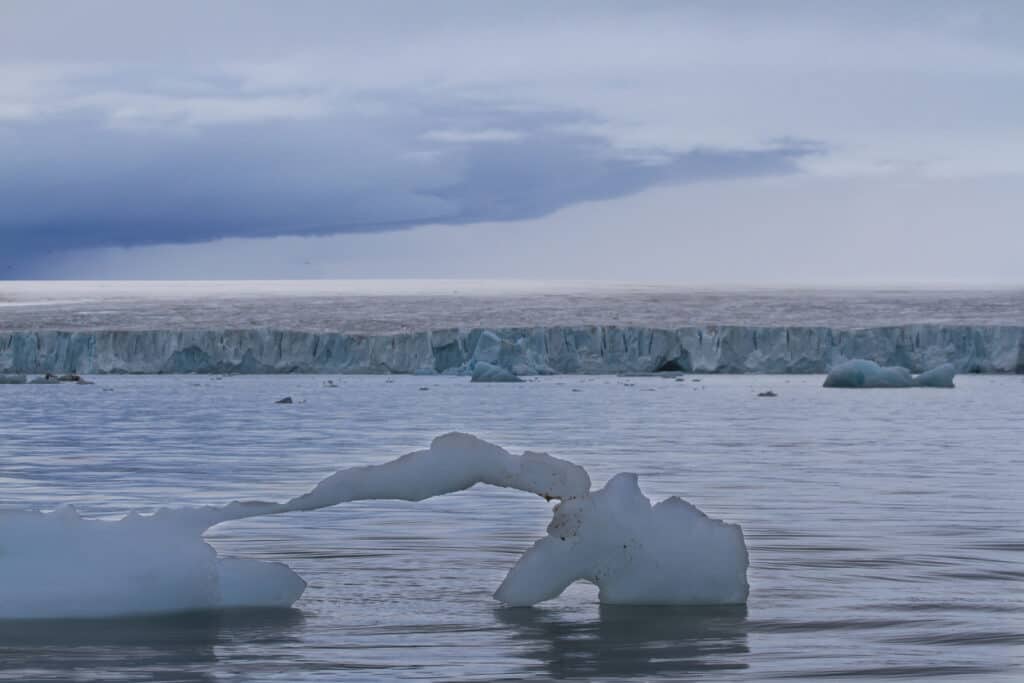
iStock.com/Katiekk2
| Nordaustlandet | ||
|---|---|---|
| Size (sq mi) | Location | Fauna |
| 5,586 | Norway | Reindeer, walrus |
Nordaustlandet is a member of the archipelago of Svalbard, Norway. The island is mostly covered in ice caps, except for the north, which is characterized by a tundra where walruses and reindeer live.
The north also hosts an old crystalline basement – a true gem with rocks such as quartzite, granite, and marble. There’s an area with sedimentary rocks, including limestone and dolomite.
Since it’s an island with natural and sedimentary treasures, there are expeditions of several days to visit it.
14. October Revolution Island
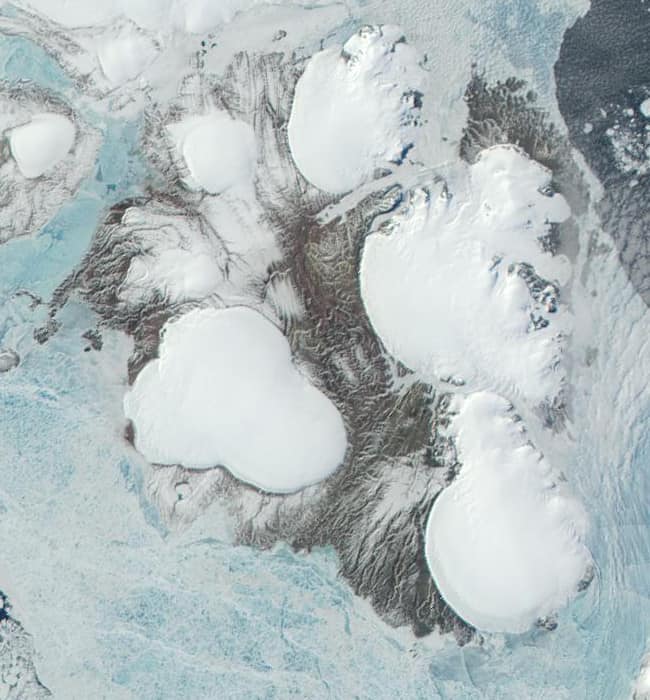
Jacques Descloitres, MODIS Land Rapid Response Team / public domain
| October Revolution Island | |
|---|---|
| Size (sq mi) | Location |
| 5,470 | Russia |
October Revolution Island is located in the Severnaya Zemlya group. Half of it is under glaciers, and the other areas consist of deserts or tundra. The island features Mount Karpinsky, with the highest point at 3,159 ft.
The island was named after the October Revolution, also known as the Bolshevik Revolution, after which Russia became a communist country.
15. Ellef Ringnes Island
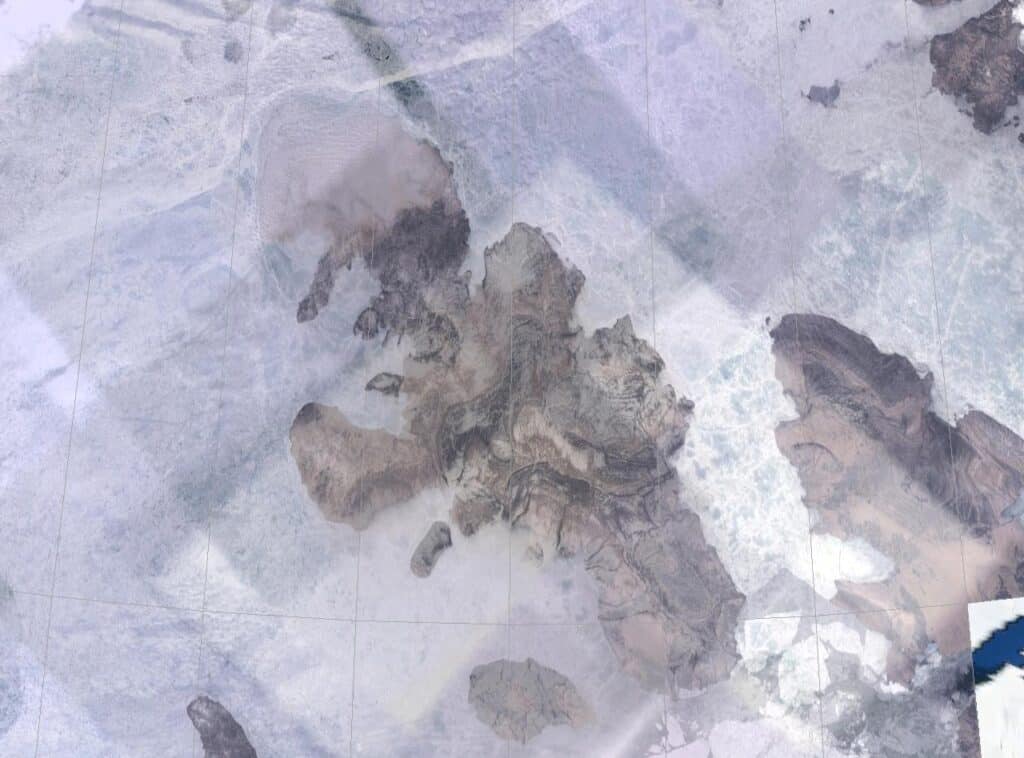
| Ellef Ringnes Island | ||
|---|---|---|
| Size (sq mi) | Location | Fauna |
| 4,361 | Canada | Polar bear |
Ellef Ringnes Island is located in Nunavut, Canada, and is part of the Sverdrup Islands. People first discovered it in 1901 during the Second Norwegian Arctic Expedition of 1989-1902.
In 1948, a high Arctic weather station called Isachsen was established on Ellef Ringnes Island. Later on, it was replaced with an automatic weather station. The staff at the station were the only people the island had ever hosted.
Fifteen species of birds and ten species of mammals live on the island, including muskoxen, polar bears, and Arctic foxes.
More from A-Z Animals
.more-snake-card-image { max-height:140px !important; }
@media (min-width: 481px) {
.mobile-top-content {
display: none;
}
}
#mobileTopContentCTACarouselControls { overflow: hidden; text-overflow: ellipsis; white-space: nowrap; }
.mobile-top-content .more { color: #fff; }
.mobile-top-content a { color: #fff; text-decoration: underline; }
.mobile-top-content a:hover { color: #fff; text-decoration: underline; }
@media (max-width: 480px) {
.mobile-top-content {
background-color: #06a10b;
color: #fff;
text-align: center;
/*height: 60px;
padding-top:5px;*/
font-size:80%;
/* display: block; */
margin: 0px -30px;
}
}
It might sound weird, but only 10% of the Earth’s surface is inhabited or covered by humans. Then, almost 71% of our planet’s surface consists of water. This means that 20% of its land surface is uninhabited, which likely includes some of the largest uninhabited islands in the world.
Now, that 10% doesn’t sound that weird anymore, right?
We know much about the inhabited parts of the world – cities, countries, etc. The same cannot be said about the uninhabited 20%. Most uninhabited areas are dense jungles, forests, or hard-to-reach areas. However, some islands fall into this category too.
Unlike the jungles or forests, islands have little to no density in terms of both flora and fauna. Most of them consist of ice caps, snow, and below-freezing temperatures, to name a few. If you want to find out more about them, we introduce you to the 15 largest uninhabited islands in the world!
1. Devon Island

RUBEN M RAMOS/Shutterstock.com
| Devon Island | ||
|---|---|---|
| Size (sq mi) | Location | Fauna |
| 21,331 | Canada | Muskox, small birds, and mammals |
Devon Island is the largest uninhabited island in the world, measuring 21,331 square miles. As a comparison, it is a bit smaller than Croatia. Devon Island is situated in Baffin Bay, Nunavut, Canada. It’s the sixth-largest island in Canada and the 27th in the world.
Scientists have shown curiosity about this island as its surface resembles the one on Mars. Another feature the island is known for is the Haughton impact crater, which appeared around 39 million years ago.
The island hosts muskoxen, small birds and mammals, and hypolith communities.
2. Alexander Island

Peter Gudella/Shutterstock.com
| Alexander Island | |
|---|---|
| Size (sq mi) | Location |
| 18,950 | Antarctica |
Alexander Island is located in Antarctica, in the Bellingshausen Sea. It was discovered in 1921 by a Russian expedition and was named after the reigning Tsar Alexander I of Russia.
It consists of mountain ranges and hills. Hodgson Lake, the Saturn Glacier, Damocles Point, and Mount Tyrrell are some of the features that make Alexander Island a curious landmass.
3. Severny Island

gans33/Shutterstock.com
| Severny Island | |
|---|---|
| Size (sq mi) | Location |
| 18,882 | Russia |
Severny Island is the 30th largest and the 3rd-largest uninhabited island in the world. It is located in the Novaya Zemlya archipelago and is a part of the Russian Arctic National Park. Almost half of the island is covered by the Severny Island ice cap – the largest glacier in Europe.
Between 1958 and 1961, the cape of Sukhoy Nos was used for nuclear weapons testing. In 1961, the Tsar Bomba hydrogen bomb test destroyed every building on the island.
4. Berkner Island

| Berkner Island | ||
|---|---|---|
| Size (sq mi) | Location | Fauna |
| 17,000 | Antarctica | Emperor penguin |
Berkner Island is located in Antarctica and is completely covered in ice. It was discovered during an expedition in 1957-1958. Over the years, it served as a jumping-off point for various polar expeditions.
Berkner Island features a designated Important Bird Area. There, one can find a colony of around 8,000 emperor penguins.
5. Axel Heiberg Island

Jeff Amantea/Shutterstock.com
| Axel Heiberg Island | ||
|---|---|---|
| Size (sq mi) | Location | Fauna |
| 16,671 | Canada | Aurorachelys turtle, Tingmiatornis bird |
Axel Heiberg Island is located in Nunavut, Canada. It’s the 7th-largest in Canada and the 32nd-largest in the world. It is named after Axel Heiberg, a Norwegian diplomat, financier, and expedition sponsor that explored the island. Even though it’s now uninhabited, it was inhabited in the past by the Unit.
There’s a small research station called the McGill Arctic Research Station on the island. It’s operated by McGill University and conducts research on climate change, hydrology, geology, microbiology, and other fields of study.
6. Melville Island

NASA blue pearl data, collecter using NASA World Wind / public domain
| Melville Island | ||
|---|---|---|
| Size (sq mi) | Location | Fauna |
| 16,274 | Canada | Polar bear, muskox, arctic wolf, brant goose |
Melville Island is located in the Arctic Archipelago. It is the 33rd largest island in the world and the 8th-largest in Canada.
While there’s almost no vegetation on the island, it hosts various animals, such as Arctic wolves, Arctic foxes, polar bears, and ermines. Between 4,000 and 8,000 brants (brant gooses) inhabit the island. It can easily be said that it’s one of the rarest goose stocks on the planet.
7. Prince of Wales Island

iStock.com/Steve Howard
| Prince of Wales Island | ||
|---|---|---|
| Size (sq mi) | Location | Animals |
| 12,872 | Canada | Caribou, wolf |
Prince of Wales Island is one of the largest islands in the Canadian Arctic Archipelago. The island was discovered in 1851. It was named after the eldest son of Queen Victoria, Albert Edward, who eventually became King Edward VII.
A study shows that in 1980, the Prince of Wales, Somerset, and Russell Islands, located in the Canadian Arctic Archipelago, hosted 6048 caribou. The number significantly decreased until 1995, reaching around 100 caribou. This decrease is associated with the increased number of wolves on the island. There’s no official evidence of what animals inhabit the island today.
8. Somerset Island

LawrieM – License
| Somerset Island | ||
|---|---|---|
| Size (sq mi) | Location | Fauna |
| 9,570 | Canada | Beluga whale |
Somerset Island is located near Prince of Wales Island, in the Canadian Arctic Archipelago. Evidence shows that it was inhabited by the Thule people around 1000 AD.
The island hosts an Arctic Watch Lodge tourist establishment because of the beluga whales spotted during summer. Tourists can get to the island via a chartered flight of around five hours.
9. Kotelny Island

Ansgar Walk / Creative Commons – License
| Kotelny Island | ||
|---|---|---|
| Size (sq mi) | Location | Fauna |
| 9,300 | Russia | Reindeer, polar fox |
Kotelny Island is located in the Russian Arctic, between the Laptev Sea and the East Siberian Sea. It was discovered in 1773 by Ivan Lyakhov, who decided to follow them after noticing reindeer tracks across the sea ice.
The island consists of sediments and sedimentary rocks dating as far back as the Early Paleozoic and Late Cenozoic.
Just in case you’re a Jules Verne fan, the action in “Cesar Cascabel” takes place on this island.
10. Bathurst Island

| Bathurst Island | ||
|---|---|---|
| Size (sq mi) | Location | Fauna |
| 6,194 | Canada | Various species of birds and insects, muskox, caribou |
Bathurst Island is located in the Canadian Arctic Archipelago and features a rich wildlife population. Although it’s now uninhabited, it previously hosted various native peoples, such as Independence I and II culture native peoples and Pre-Dorset and Dorset cultures.
Bathurst Island features the Polar Bear Pass, a wetland and mountain pass that is home to various bird and insect species. Ecological research stations currently conducting studies on caribou and muskoxen are present on the island.
11. Prince Patrick Island

iStock.com/Duyi_Han
| Prince Patrick Island | |
|---|---|
| Size (sq mi) | Location |
| 6,119 | Canada |
Prince Patrick Island is located northwest of Melville Island. It is one of the least accessible territories in Canada. It was discovered in 1953 by George Mecham and Francis Leopold McClintock. Later on, it was named after the Governor-General of Canada from 1911 to 1926, Prince Arthur William Patrick, Duke of Connaught.
In 1948, a High Arctic Weather Station started operating on the island to conduct regular weather observations. 10 to 40 people worked and lived there. It was closed in 1997, and its staff represented the only people who ever lived on Prince Patrick Island.
12. Thurston Island

NASA Goddard Space Flight Center / Jim Yungel / flickr – License
| Thurston Island | |
|---|---|
| Size (sq mi) | Location |
| 6,100 | Antarctica |
After Alexander Island and Berkner Island, Thurston Island is the third-largest island in Antarctica. It was discovered from the air in 1940, but it was recognized as an island only in 1960. Until then, people believed it was a peninsula. Thurston Island was named after a sponsor of the Antarctic Expedition, W. Harris Thurston.
The island features the Walker Mountains and numerous glaciers and peninsulas.
13. Nordaustlandet

iStock.com/Katiekk2
| Nordaustlandet | ||
|---|---|---|
| Size (sq mi) | Location | Fauna |
| 5,586 | Norway | Reindeer, walrus |
Nordaustlandet is a member of the archipelago of Svalbard, Norway. The island is mostly covered in ice caps, except for the north, which is characterized by a tundra where walruses and reindeer live.
The north also hosts an old crystalline basement – a true gem with rocks such as quartzite, granite, and marble. There’s an area with sedimentary rocks, including limestone and dolomite.
Since it’s an island with natural and sedimentary treasures, there are expeditions of several days to visit it.
14. October Revolution Island

Jacques Descloitres, MODIS Land Rapid Response Team / public domain
| October Revolution Island | |
|---|---|
| Size (sq mi) | Location |
| 5,470 | Russia |
October Revolution Island is located in the Severnaya Zemlya group. Half of it is under glaciers, and the other areas consist of deserts or tundra. The island features Mount Karpinsky, with the highest point at 3,159 ft.
The island was named after the October Revolution, also known as the Bolshevik Revolution, after which Russia became a communist country.
15. Ellef Ringnes Island

| Ellef Ringnes Island | ||
|---|---|---|
| Size (sq mi) | Location | Fauna |
| 4,361 | Canada | Polar bear |
Ellef Ringnes Island is located in Nunavut, Canada, and is part of the Sverdrup Islands. People first discovered it in 1901 during the Second Norwegian Arctic Expedition of 1989-1902.
In 1948, a high Arctic weather station called Isachsen was established on Ellef Ringnes Island. Later on, it was replaced with an automatic weather station. The staff at the station were the only people the island had ever hosted.
Fifteen species of birds and ten species of mammals live on the island, including muskoxen, polar bears, and Arctic foxes.

